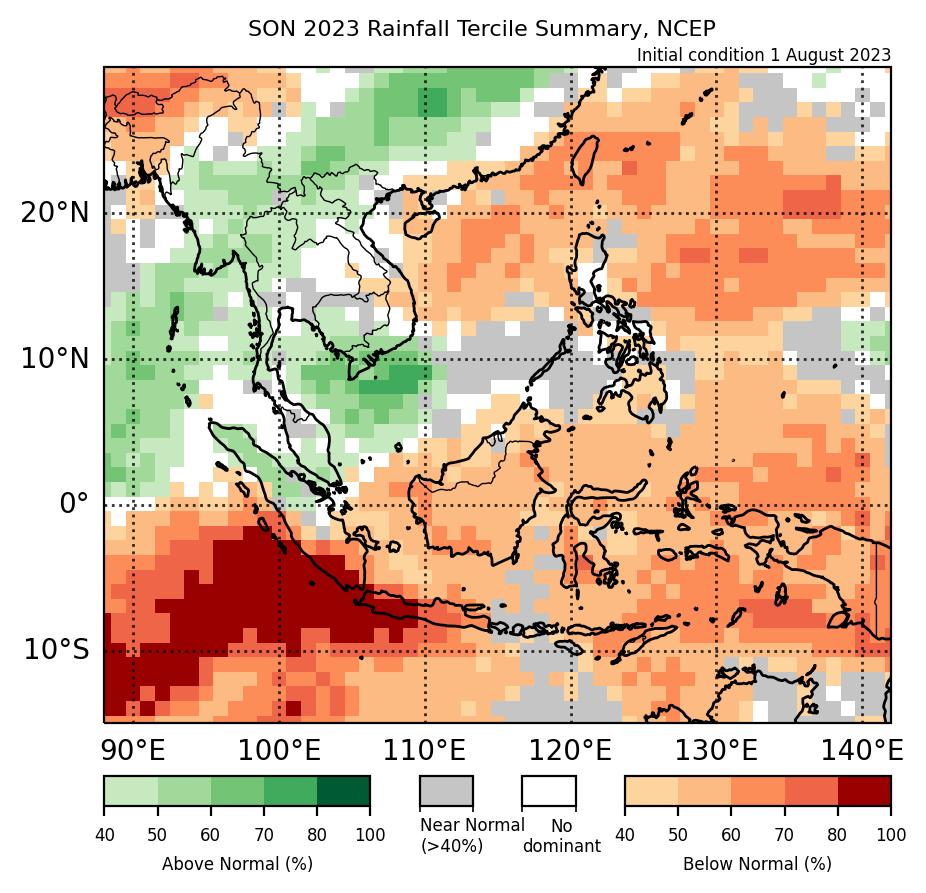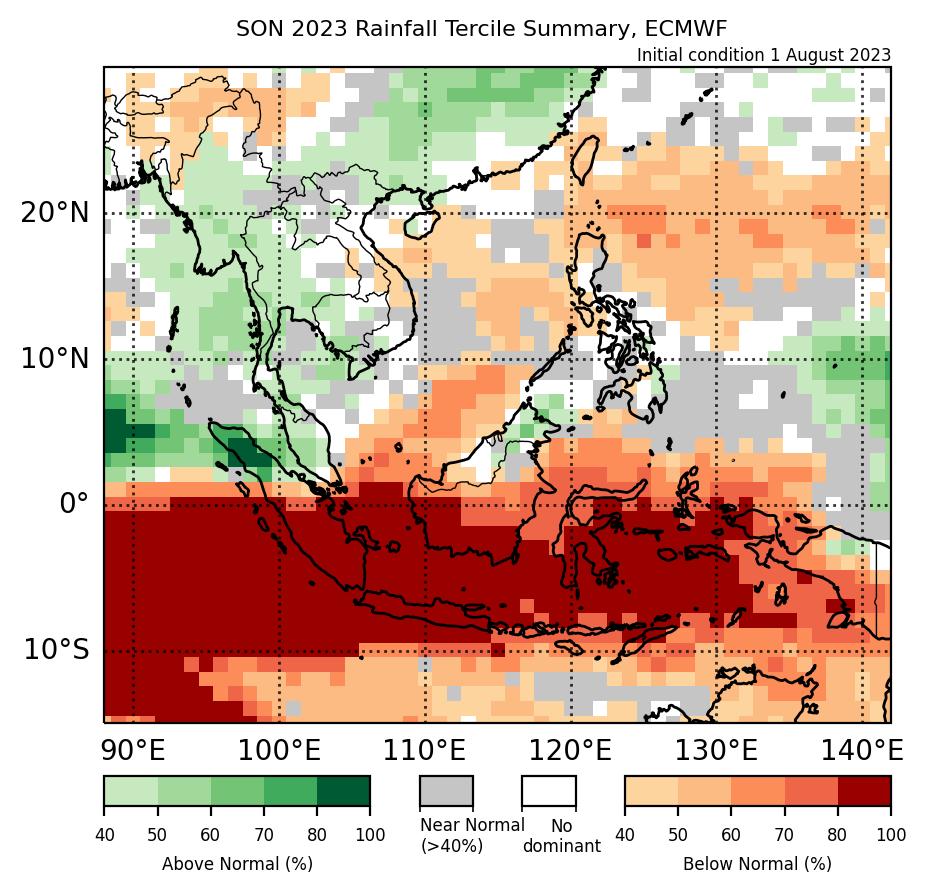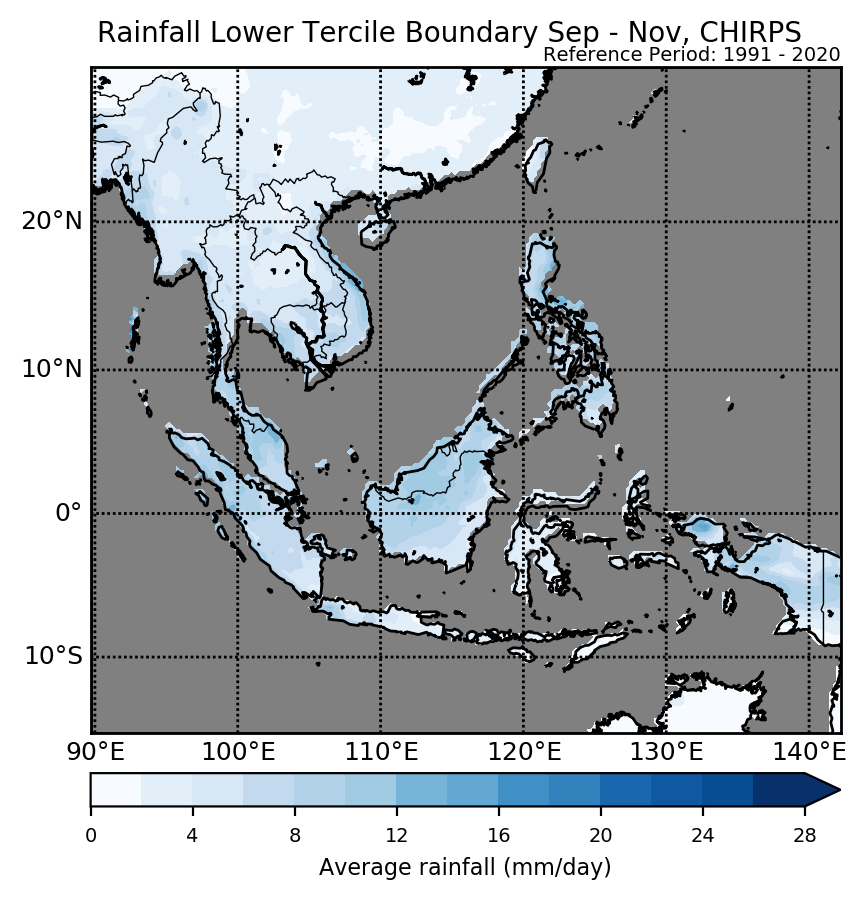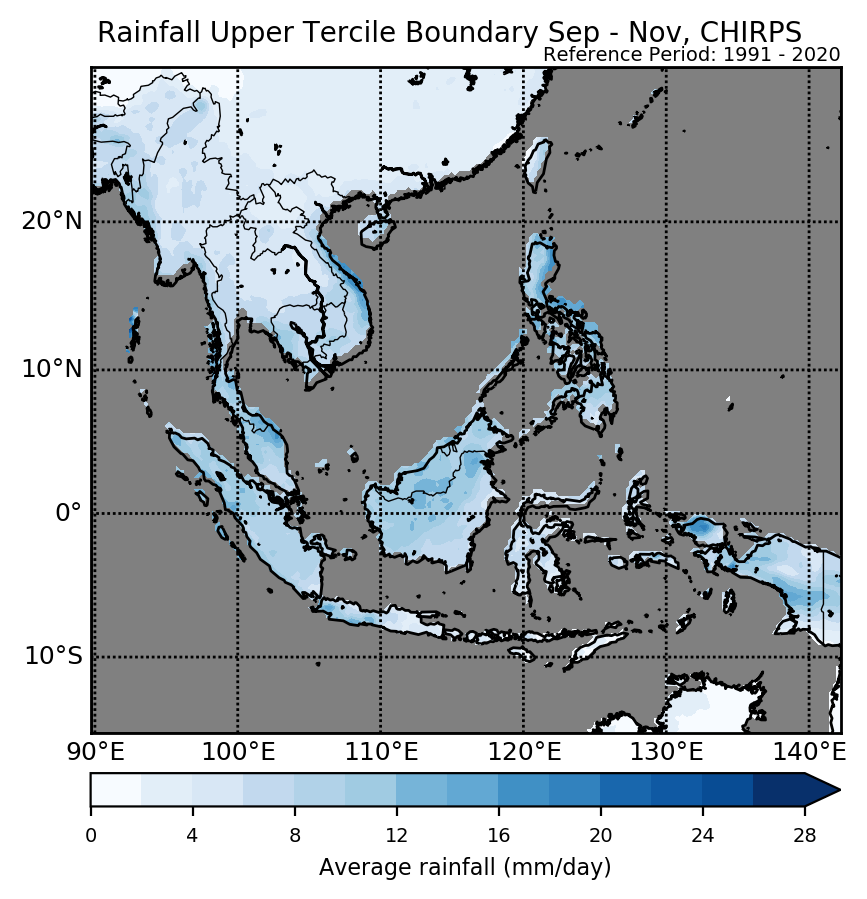Rainfall
Seasonal Rainfall Outlook: September-November 2023 (SON)
Issued: 31 Aug 2023
For SON 2023, models predict an increased chance of below-normal rainfall for most of the Maritime Continent.
For SON 2023, below-normal rainfall is predicted for most of the Maritime Continent, based on the multi-model ensemble (Figure 4). The ECMWF model (Figure 2) shows the highest confidence for below-normal rainfall for regions south of the equator, while the NCEP and then the UKMO models (Figures 1 and 3) are predicting below-normal rainfall with relatively lower confidence for most of the Maritime Continent. However, all three models predict an increase in chance of above-normal rainfall over the northwestern Maritime Continent. Models’ skill is moderate to good skill for below-normal rainfall over the Maritime Continent, and low to moderate for above-normal rainfall over the northwestern Maritime Continent.
For Mainland Southeast Asia, there is a small increase in chance of above-normal rainfall over western and southern parts of the region, and no dominant tercile elsewhere, based on the multi-model ensemble (Figure 4). The NCEP and ECMWF models (Figures 1 and 2) predict above-normal rainfall over much of western and southern Mainland Southeast Asia, while the UKMO model (Figure 3) predicts a mix of below- to above-normal rainfall over this region. The models’ skill is generally low to moderate over Mainland Southeast Asia for all three tercile categories.

Figure 1: Rainfall tercile summary predictions of NCEP model for SON 2023 (contains modified Copernicus C3S information).

Figure 2: Rainfall tercile summary predictions of ECMWF model for SON 2023 (contains modified Copernicus C3S information).

Figure 5: Average climatological rainfall's lower tercile boundary for SON based on CHIRPS (Reference period: 1991-2020).

Figure 6: Average climatological rainfall's upper tercile boundary for SON based on CHIRPS (Reference period: 1991-2020).
The qualitative outlook is assessed for the region in general. For specific updates on the national scale, the relevant ASEAN National Meteorological and Hydrological Services should be consulted.